
Imagine stepping onto a plane and being guided past cramped economy seats, where the smell of someone’s packed lunch fills the air, to a space that feels like a luxurious palace in the sky. Welcome to the extravagant realm of first-class aviation, where airlines compete fiercely to provide an experience that makes passengers feel like royalty at 35,000 feet. Here, comfort is paramount, with spacious suites, gourmet dining, and personalized service that often surpass the comforts of upscale apartments.

In 2025, the competition among airlines has reached new heights, with innovations in design and service that cater to the discerning traveler. From private suites with sliding doors to onboard showers and gourmet cuisine crafted by world-renowned chefs, the amenities offered in first class are designed to pamper passengers. Whether you’re looking for a peaceful retreat during a long-haul flight or a lavish experience that includes personal butlers and extensive wine selections, the world of first-class travel is more opulent than ever before.

As we explore the top airlines for first-class travel in 2025, it's clear that these experiences represent not just a mode of transportation, but a lifestyle choice. The following airlines have set the standard for luxury in the skies, making each journey an unforgettable experience.
Top First Class Airlines for 2025
1. Etihad Airways A380 Residence

Etihad Airways has redefined luxury with its Airbus A380 first-class "Apartments," featuring nine enclosed suites equipped with sliding doors. Each suite includes a Poltrona Frau leather recliner, a separate sleeping area with lavish linens, and a vanity fit for social media influencers. With the push of a button, electronic window shades transform the cabin atmosphere, and a large swiveling TV allows passengers to enjoy the latest films while dining.
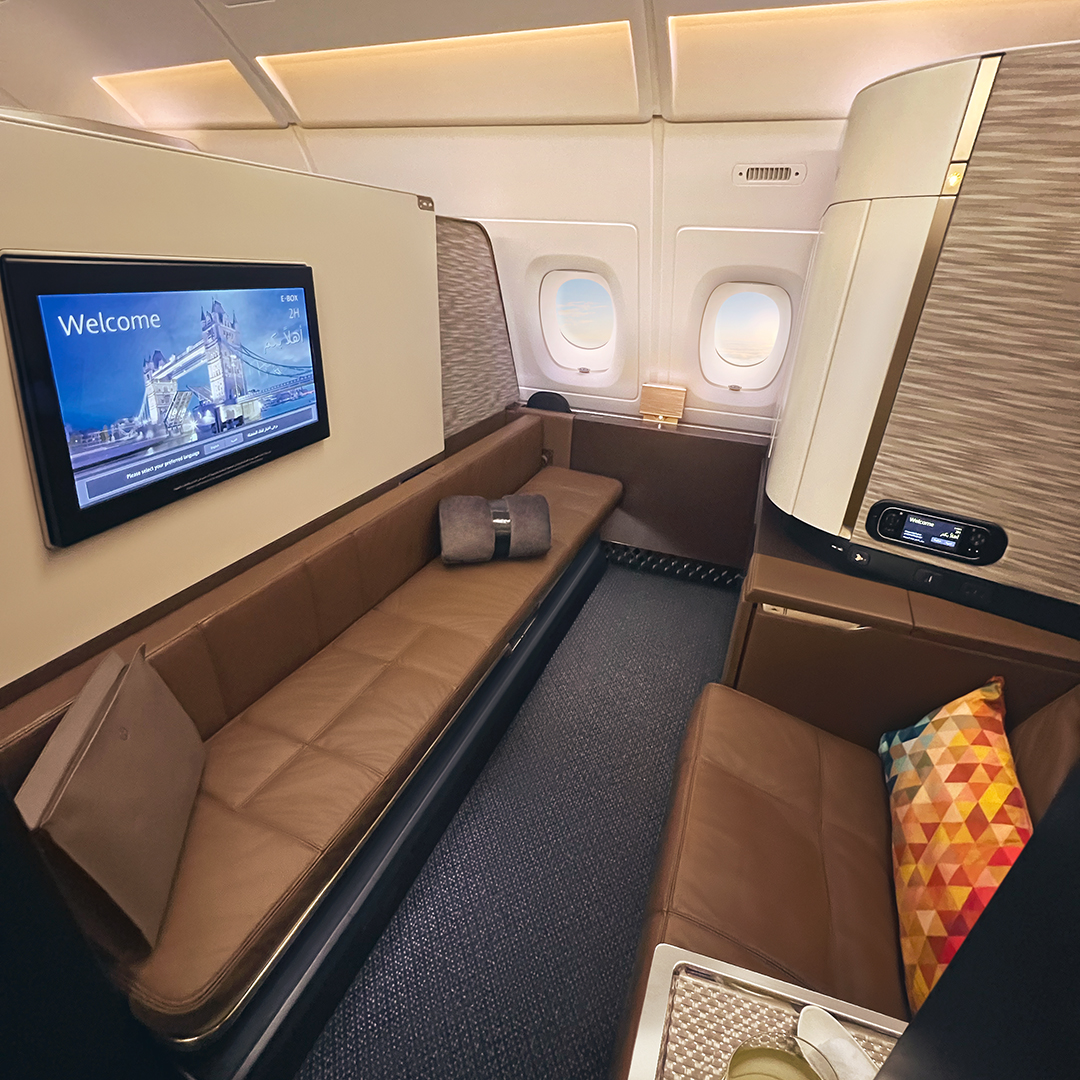
For the ultimate indulgence, "The Residence" offers a lavish two-room suite with a queen bed and butler service, costing over $25,000. Passengers can also enjoy gourmet meals prepared by top chefs, ensuring a culinary experience that matches the luxurious surroundings.
2. Emirates 777-300ER

Emirates has elevated the middle seat to a coveted space in its Boeing 777-300ER, featuring two rows of three luxurious suites. Passengers can indulge in selections from a $500-million wine cellar while enjoying zero-gravity seating designed by space engineers.
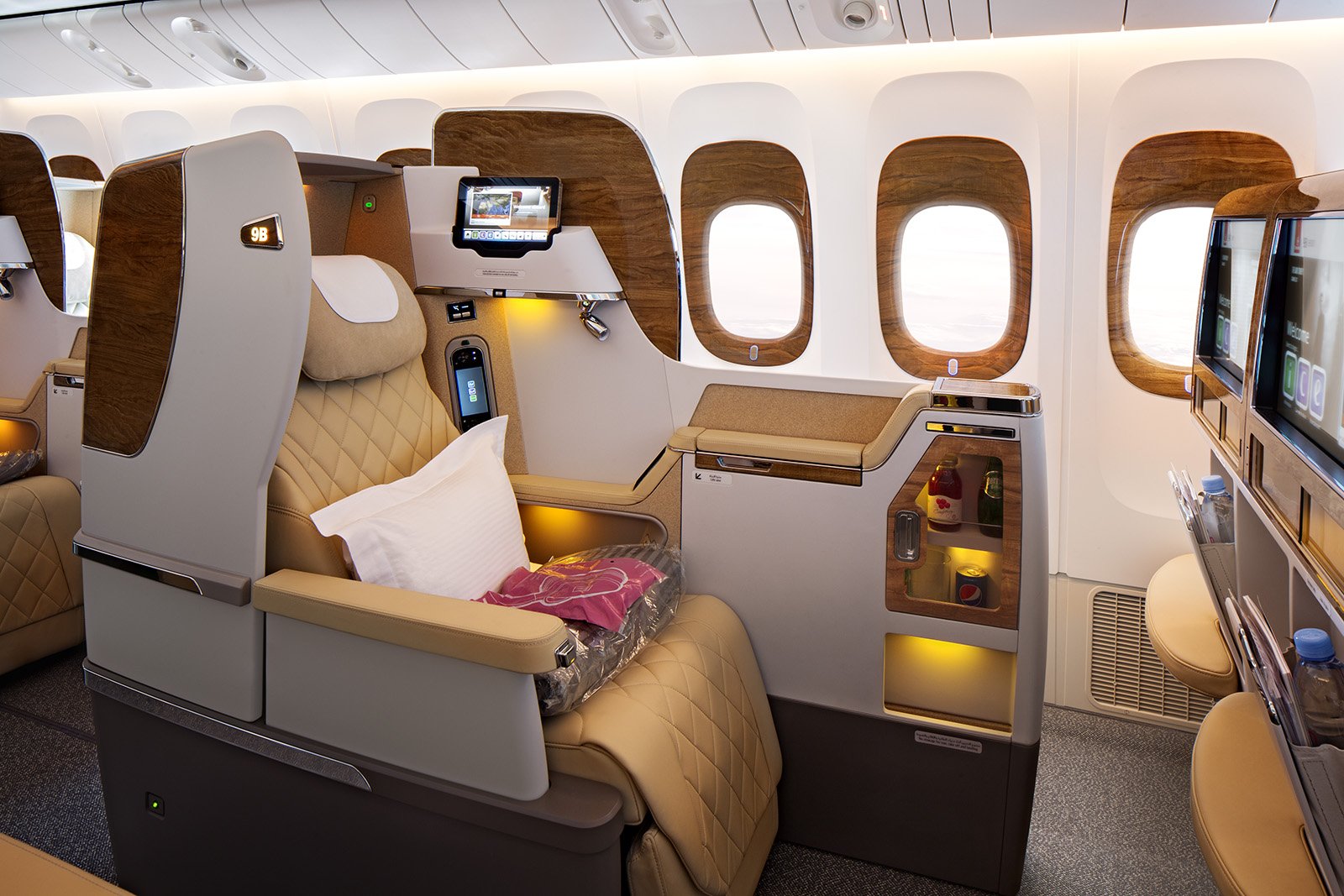
The suite also includes a video chat system for easy communication with the crew, alongside 32-inch HD monitors and personalized climate control. Emirates also offers an onboard shower spa, allowing first-class passengers to refresh during long-haul flights, adding to the sense of indulgence.
3. Japan Airlines Airbus A350-1000

Japan Airlines’ Airbus A350-1000 showcases meticulous attention to detail, offering six individual suites that resemble spacious sofas. With the largest TV screens in aviation at 43 inches and immersive audio from headrest speakers, the experience is further enhanced by a culinary program that highlights Japan's gastronomic excellence, including rare champagnes and exclusive whiskeys.

Passengers can also enjoy authentic Japanese kaiseki meals, prepared with seasonal ingredients, elevating the dining experience.
4. Air France La Première
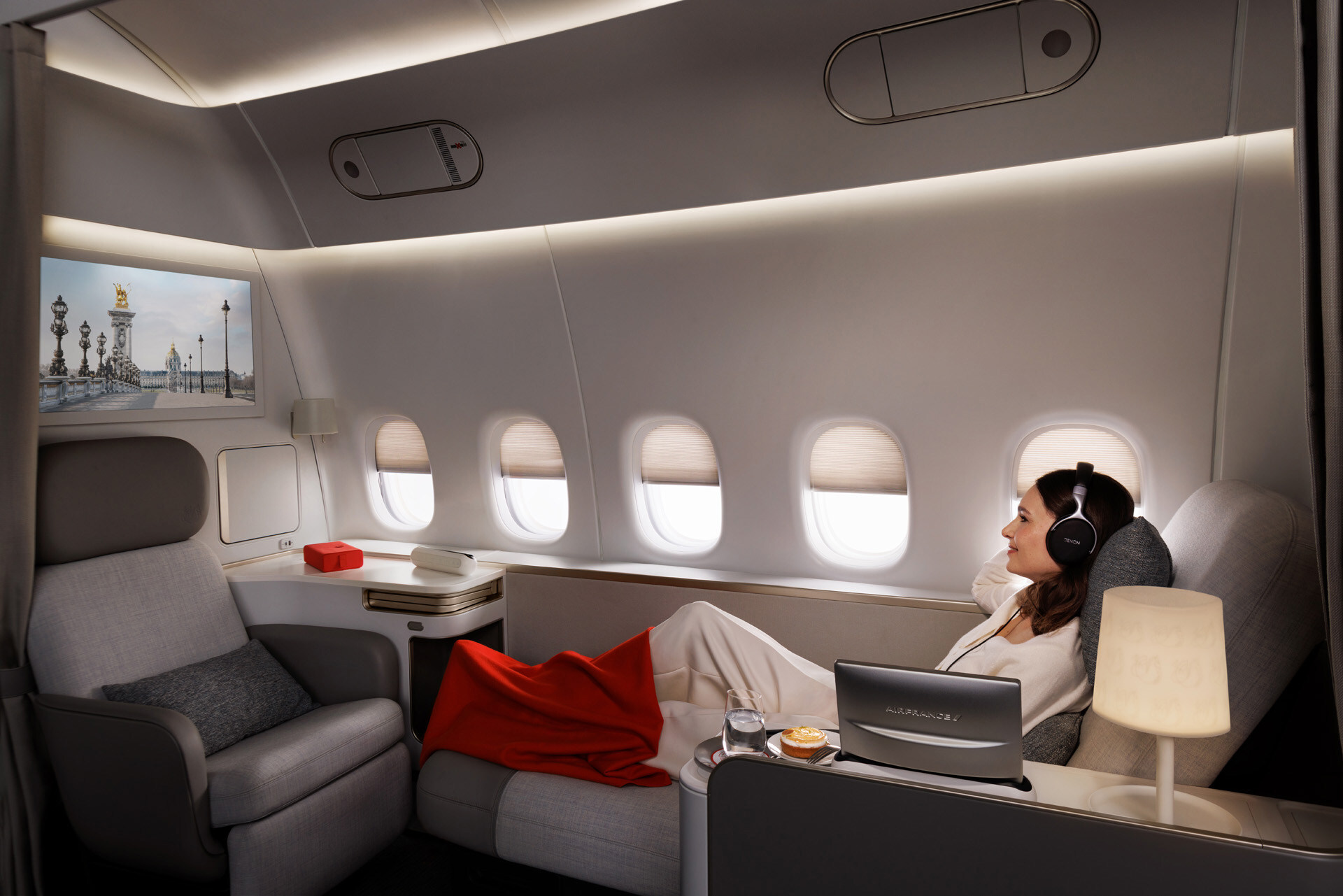
Air France’s La Première epitomizes French elegance, providing private sedan transfers from the lounge to the aircraft, eliminating terminal stress. Passengers savor a gourmet tasting menu crafted by renowned chefs, served under polished silver cloches.

The suites feature floor-to-ceiling curtains and an array of amenities, including private wardrobes and separate lounges, creating a chic Parisian ambiance at cruising altitude. Additionally, the cabin design incorporates mood lighting and soundproofing for an unparalleled sense of tranquility.
5. Lufthansa A350 Allegris

Lufthansa’s first-class experience reflects German precision and sophistication, from fresh roses at each seat to luxurious pajamas. The Frankfurt hub includes a private terminal with a restaurant, nap rooms, and shower suites.

The new A350 Allegris boasts full-height doors and a unique double-bedded center suite, ensuring both intimacy and privacy for couples or solo travelers. Special sound-dampening carpets enhance comfort, while the onboard dining features a selection of gourmet dishes paired with fine wines from a curated list.
6. Singapore Airlines A380 Suites
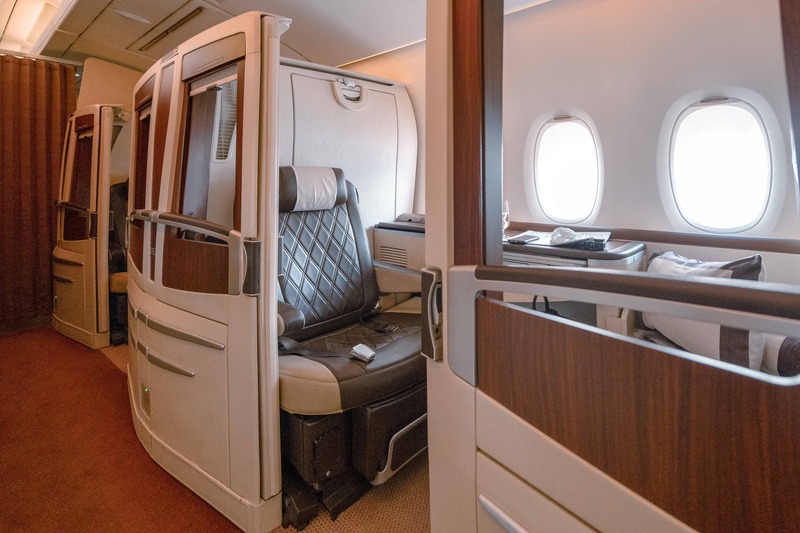
Singapore Airlines’ A380 Suites are the largest in commercial aviation, offering 50 square feet of space per passenger, complete with separate reclining chairs and beds. The pre-flight experience at Changi Airport sets the bar high, with complimentary champagne and a diverse menu featuring gourmet dishes.

The control tablet allows passengers to adjust lighting and ambiance, enhancing the luxurious experience. Additionally, the cabin includes a dedicated crew member for personalized service, ensuring that every need is met promptly.
7. Cathay Pacific Boeing 777
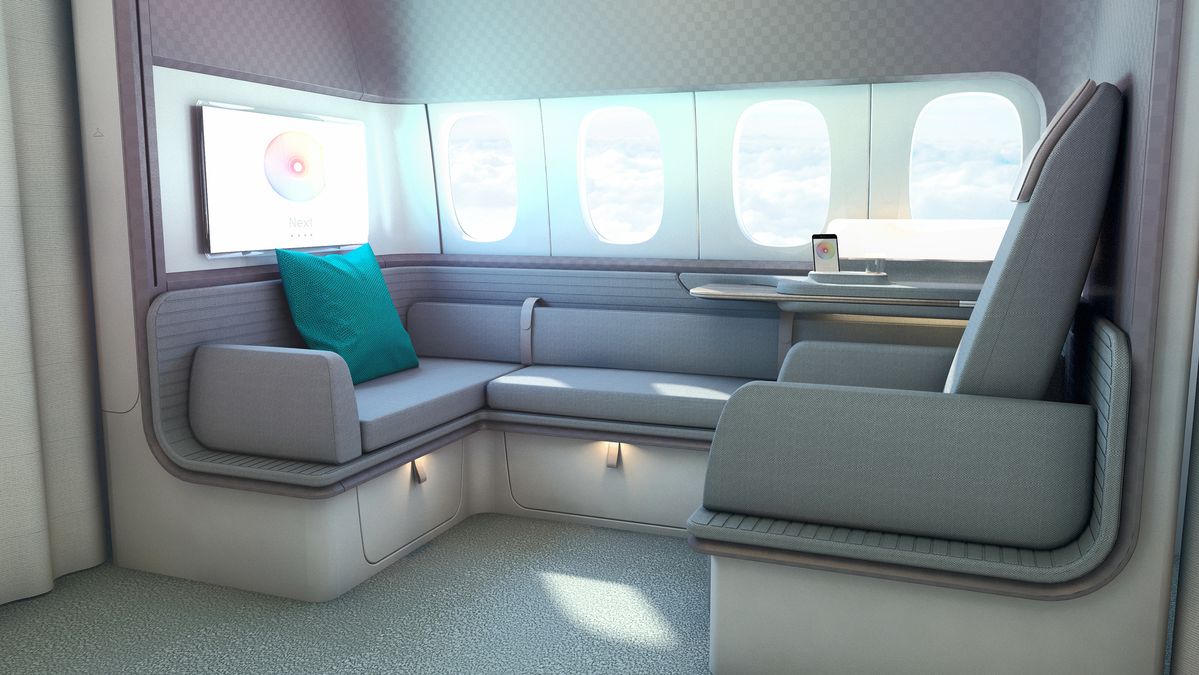
Cathay Pacific’s Boeing 777 first-class exemplifies understated luxury. Although the suites lack privacy doors, they provide some of the most comfortable lie-flat seats available. The culinary offerings include premium meats and authentic Asian dishes, ensuring that every aspect of the journey is executed with excellence.

Passengers can also partake in a selection of fine wines and spirits, curated to complement the diverse menu, enhancing the gourmet experience.
8. All Nippon Airways Boeing 777-300ER
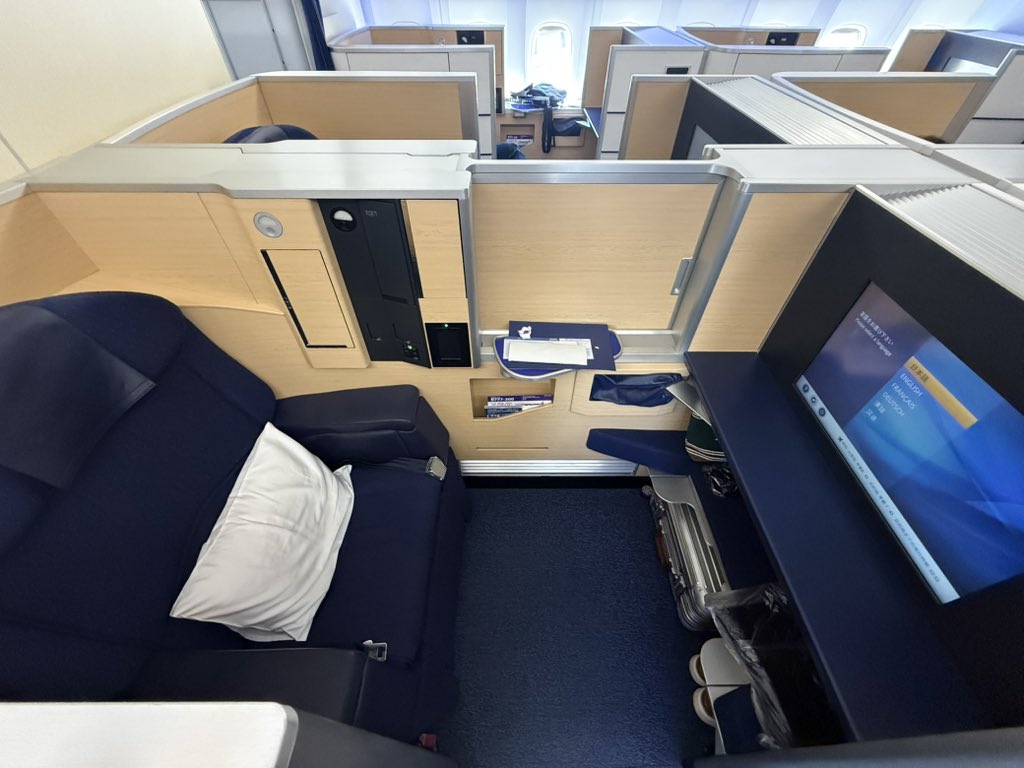
ANA’s Boeing 777-300ER, known as "The Suites," showcases Japanese hospitality through fully-enclosed suites and expansive 42-inch entertainment screens. The beverage selection includes a variety of premium sakes and champagnes.
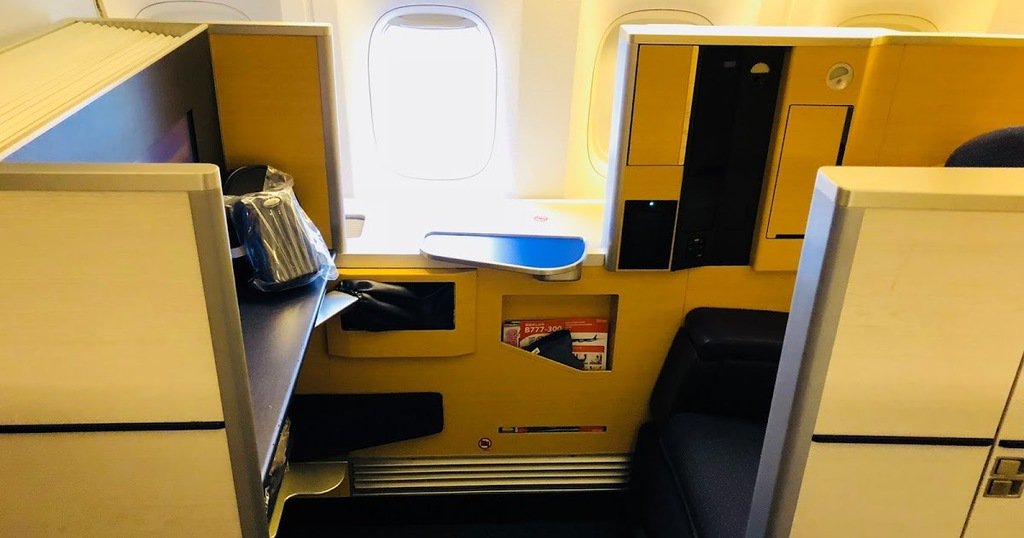
Thoughtful design features, such as coat closets and electronically controlled window blinds, enhance passenger comfort and convenience. The onboard service includes personalized greetings and attention to detail that reflects the best of Japanese culture.
9. Qantas A380
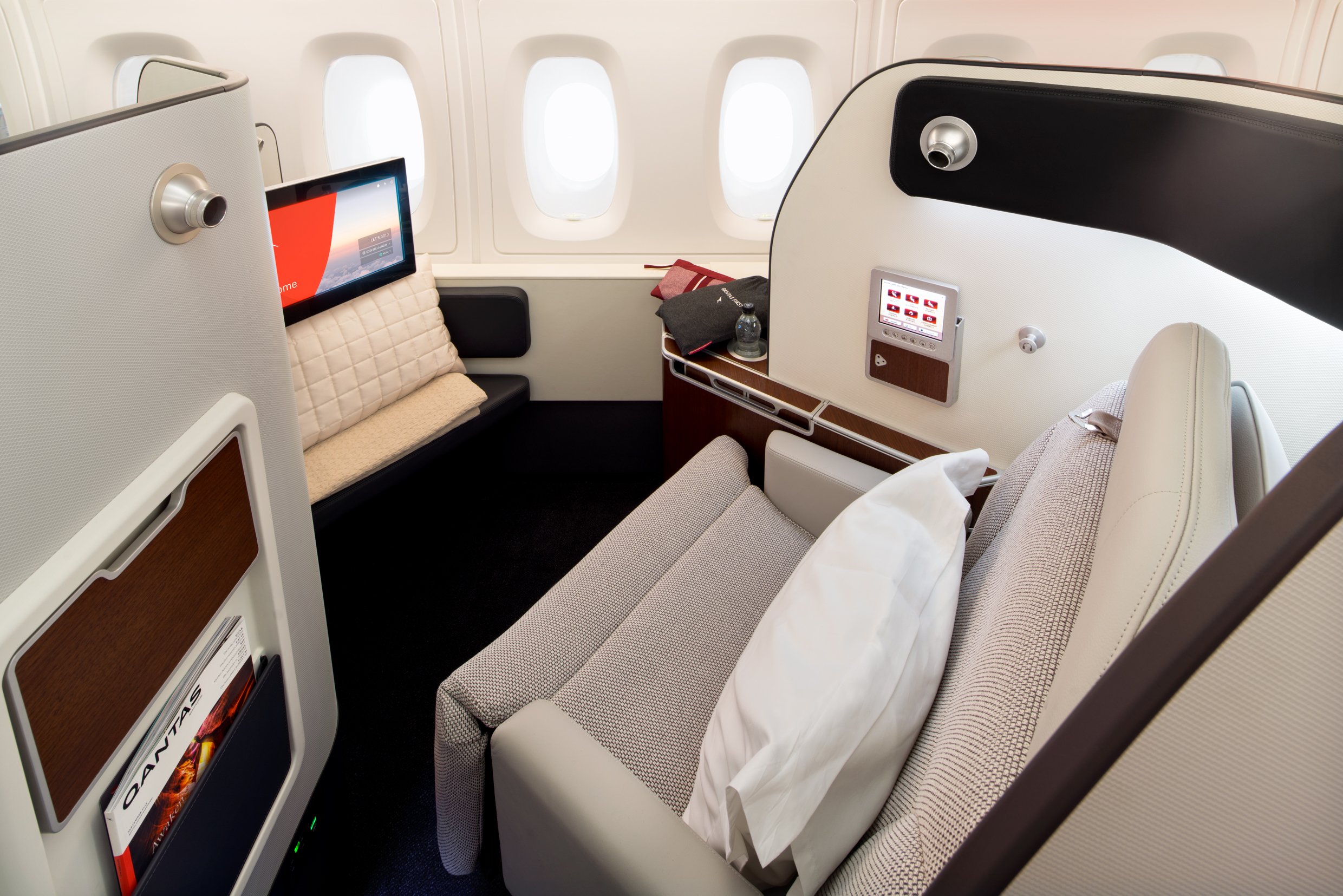
Qantas’ Airbus A380 first-class seamlessly connects Australia to the U.S. with a luxurious experience that begins in their well-appointed airport lounges. Onboard, passengers enjoy spacious beds and a variety of high-quality dining options, including plant-based meals, reflecting modern dietary trends.

The experience also includes a dedicated onboard chef who crafts meals tailored to individual preferences, ensuring that the dining experience is as unique as it is delicious.
Conclusion
These nine exceptional first-class offerings are more than mere transportation; they are lifestyle statements characterized by cutting-edge technology and unparalleled service. Whether it’s Etihad’s apartment-style suites, Emirates’ innovative features, or Singapore’s spacious accommodations, these premium cabins affirm that luxury knows no bounds in the skies. So, the next time you find yourself wedged in economy, remember that above the clouds, others are reveling in their flying palaces, complete with personal butlers and beds that rival those in five-star hotels. In this world of aviation luxury, the sky truly is the limit.



.jpg)


.jpg)


.jpg)






.jpg)
.jpg)









.jpg)

.jpg)



.jpg)
.jpg)

.jpg)




.jpg)

.jpg)








